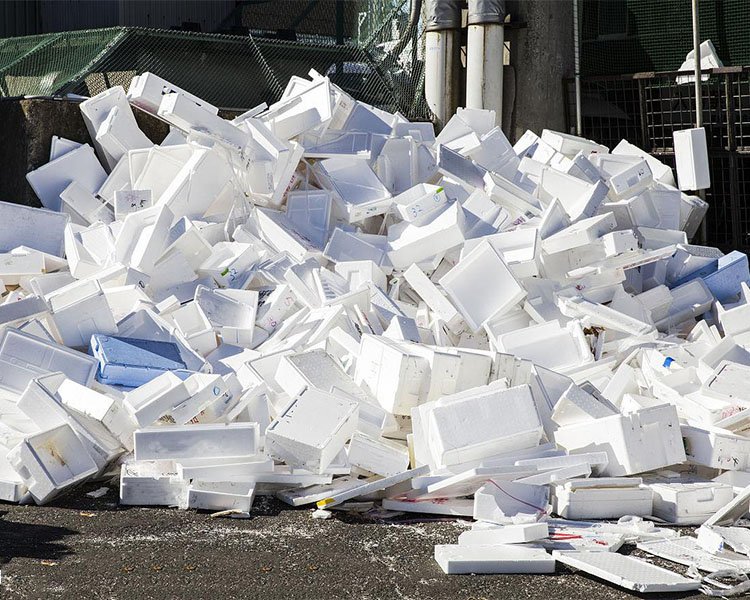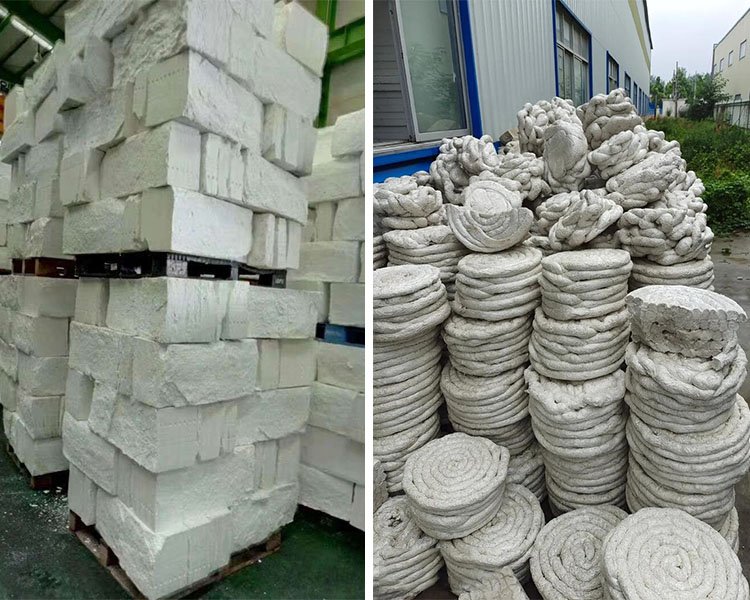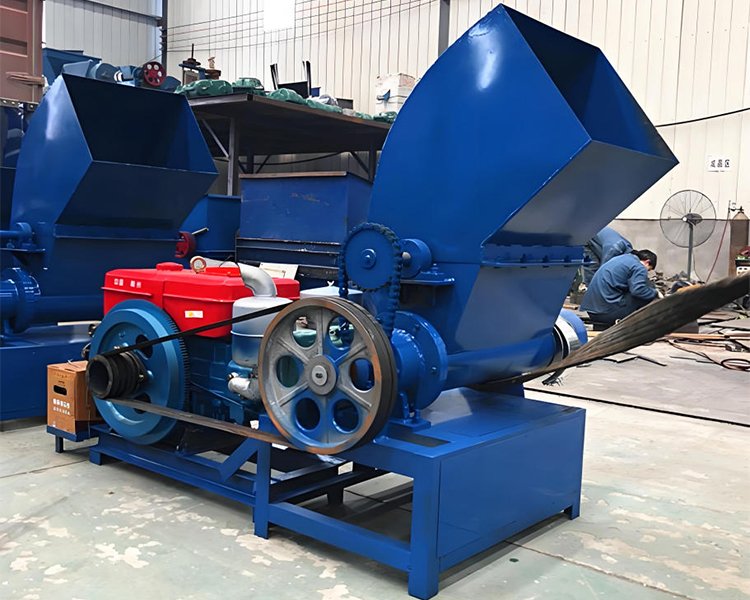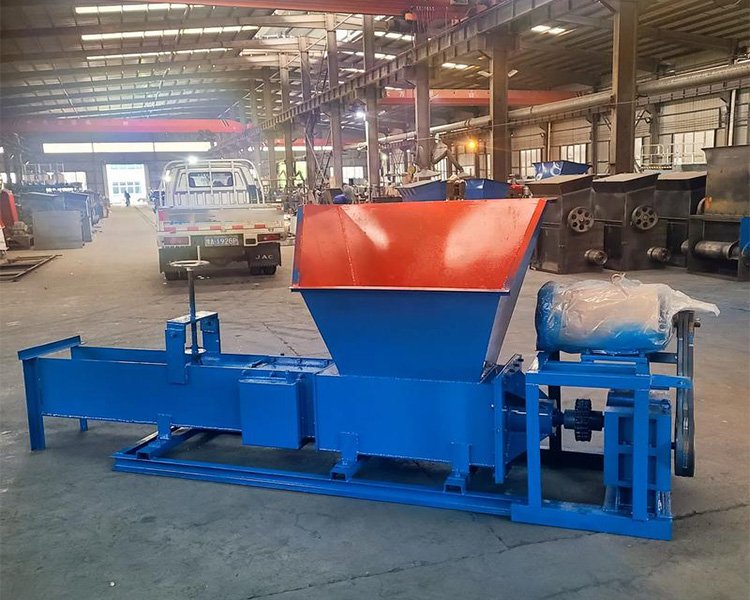What are the advantages of plastic crusher production line
304The plastic crusher production line is widely used in the recycling and reuse of various waste plastics
View detailsSearch the whole station
If your business handles Styrofoam, you know the problem. It is bulky, takes up huge amounts of space, and is very expensive to transport and dispose of. A Styrofoam compactor is a machine that solves this problem. It dramatically reduces the volume of foam waste and, more importantly, turns a costly problem into a source of profit. We are Fude Machinery, and we build these solutions. We will show you how this machine can be a game-changer for your business.
A Styrofoam compactor solves the volume problem. Styrofoam, or Expanded Polystyrene (EPS), is 98% air. This is why it is so light and bulky. For your business, this means your waste bins fill up instantly. Your warehouse space gets clogged with piles of foam. And worst of all, you are paying for trucks to transport mostly air to the landfill. It is incredibly inefficient.
We designed our EPS recycling machines to directly attack this core problem. The machine squeezes out all the air, reducing the foam’s volume by up to 90:1. Imagine taking 50 truckloads of loose foam waste and condensing it down into just one truckload of dense, stackable blocks. This is what a compactor does. It transforms your logistical nightmare into a manageable, and even profitable, operation.


Both types of compactors work by using a powerful screw to crush the foam and squeeze out the air. The main difference is how they form the final, dense block. One uses only pressure (cold press), while the other uses both pressure and heat (hot melt). Choosing between them depends on your desired output density and operational needs.
As a manufacturer, we build both types because our B2B clients have different goals. A hot melt densifier produces a much heavier, more condensed block that often sells for a higher price. A cold press compactor is simpler, uses less energy, and is a perfect entry-point for businesses starting their foam recycling journey. Let’s look at each one.
Cold Press Compactors
A cold press machine is a straightforward mechanical solution. You feed the waste foam into the hopper. A large, powerful screw grabs the foam, breaks it up, and pushes it forward into a compression chamber. The immense pressure forces the air out, and a dense, continuous log of compacted foam comes out the other end. These logs, sometimes called ingots, are easy to handle and stack. This method is energy-efficient and highly effective for most foam types, including packaging and fish boxes.
Hot Melt Densifiers
A hot melt densifier takes the process a step further. After the screw crushes and compacts the foam, the material is pushed through a heated section. The heat melts the surface of the foam, which then cools and solidifies as it exits the machine. This process creates a much denser, heavier, and non-porous block that looks like a solid piece of plastic. These melted blocks are highly sought after by recyclers because they are easier to transport and process into new products.
| Feature | Cold Press Compactor | Hot Melt Densifier | What This Means for Your Business |
|---|---|---|---|
| Technology | High-pressure screw only | Screw press + Heating element | Hot melt is a more advanced process. |
| Compression Ratio | Up to 50:1 | Up to 90:1 | Hot melt gives you the highest possible density. |
| Output Block | Dense, compacted log | Very heavy, melted, solid ingot | The melted ingot is often more valuable and easier to sell. |
| Energy Use | Lower | Higher (due to heating element) | Your electricity costs will be lower with a cold press machine. |
| Best For | Lower volume, simplicity, energy savings | Highest density, maximum value, industrial scale | Choose based on your volume and the market price for ingots. |

Foam hot melt machine

Foam cold press machine
A compactor creates profit in two ways: It creates a new revenue stream and it drastically cuts your current operational costs. This is why it is such a smart investment. You are not just buying a waste management tool; you are buying a machine that positively impacts your company’s bottom line from day one.
At Fude Machinery, we focus on helping our clients see this full financial picture. The machine pays for itself over time. Let’s break down the three main financial benefits you will see when you install a Styrofoam densifier.
1. You Can Sell the Densified Blocks
This is the most direct way the machine makes you money. The compressed EPS blocks are not trash. They are a valuable raw material. Companies buy these blocks and use them to manufacture a huge range of new products, like picture frames, architectural moldings, park benches, and insulation panels. The market price for these blocks is stable, giving you a consistent new source of income from something you used to pay to throw away.
2. You Slash Transportation and Disposal Costs
This is where you will see the biggest savings. Think about your current waste management bills. How much do you pay for landfill fees? How much do you pay for a waste collection company to haul away your bulky foam? With a compression ratio of up to 90:1, you can reduce these costs by a similar percentage. One pickup for densified blocks costs a fraction of what 50 pickups for loose foam would cost. These savings go directly back into your business.
3. You Reclaim Valuable Factory and Warehouse Space
How much is your floor space worth? Piles of bulky foam take up an enormous amount of room that could be used for production, inventory, or new equipment. By compacting the foam into dense, neatly stackable blocks, you free up this valuable space. A more organized, efficient workspace is a more profitable workspace.
When you are importing a Styrofoam compactor, you need to look at the machine’s core engineering. You want a machine that is powerful, reliable, and safe. As a factory-direct manufacturer, we know exactly what makes a machine last. A cheap machine with a weak motor will constantly jam and fail, costing you more in the long run.
The machine needs to be matched to your specific foam type and volume. An experienced partner like us can guide you through these choices. For a broader look at our size reduction machinery, you can explore our full range of shredder equipment.
Key Features of a Quality Machine:

1. What is the compression ratio of a Styrofoam compactor?
A cold press compactor typically achieves a volume reduction ratio of up to 50:1. A hot melt densifier can achieve a ratio of up to 90:1, creating the densest possible output.
2. Can your machines handle wet Styrofoam, like fish boxes?
Yes. Our cold press compactors are particularly well-suited for processing wet foam from fish boxes. They are designed with features to handle the moisture without affecting performance.
3. What is the difference between EPS, EPE, and EPP foam?
EPS (Expanded Polystyrene) is the rigid white foam used in packaging. EPE (Expanded Polyethylene) is the soft, flexible white foam. EPP (Expanded Polypropylene) is a more flexible and durable foam. Our machines are primarily for EPS, but please consult with us about your specific material.
4. How much are the densified EPS blocks actually worth?
The market price varies by region and quality, but it is a globally traded commodity. On average, the price can range from $300 to over $700 per ton. We can help you understand the potential market value in your area.
A Styrofoam compactor is far more than just a piece of waste equipment. It is a powerful financial tool. It solves one of the most difficult waste problems in modern industry by drastically reducing volume. By doing so, it slashes your operational costs and creates a brand-new revenue stream from sellable, densified blocks.
The key to a successful investment is choosing a high-quality machine and partnering with a manufacturer who understands your business goals. As a factory-direct producer, we provide the expertise, customization, and value you need to turn your foam problem into a real profit center.
Ready to stop paying for your foam waste and start selling it?
Let our team show you how. Provide us with details about your type of foam and your monthly volume. We will prepare a customized technical solution and a competitive, factory-direct quotation for the perfect machine.
Contact Fude Machinery today to start your profitable recycling journey!
The plastic crusher production line is widely used in the recycling and reuse of various waste plastics
View detailsShredders can be divided into various types based on their shredding methods and cutting tools, such as single/double axis, and four axis. Among them, double axis shredders are one of the most commonly used equipment.
View detailsTable of ContentsIntroductionWhat Is a Metal Crusher?How a Metal Crusher Works1. Feeding the Materials2. Crushing Mechanism3. Output and RecyclingTypes of Metal Crushers1. Single-Axis Crushers2. Dual-Axis Crushers3. Waste Treatment CrushersBenefi...
View detailsA plastic crusher is a device specifically designed for crushing large, thin, or other forms of plastic materials
View details